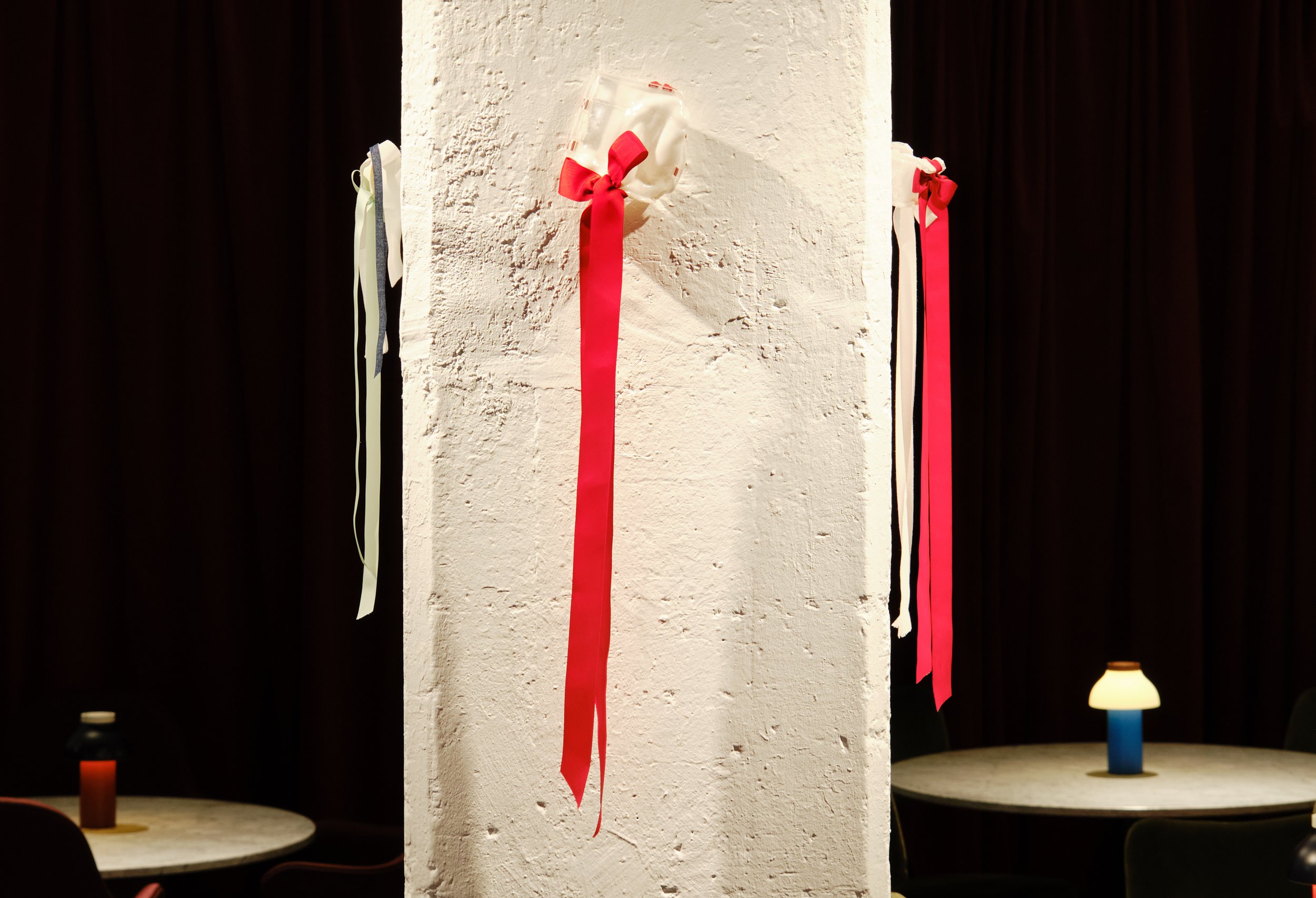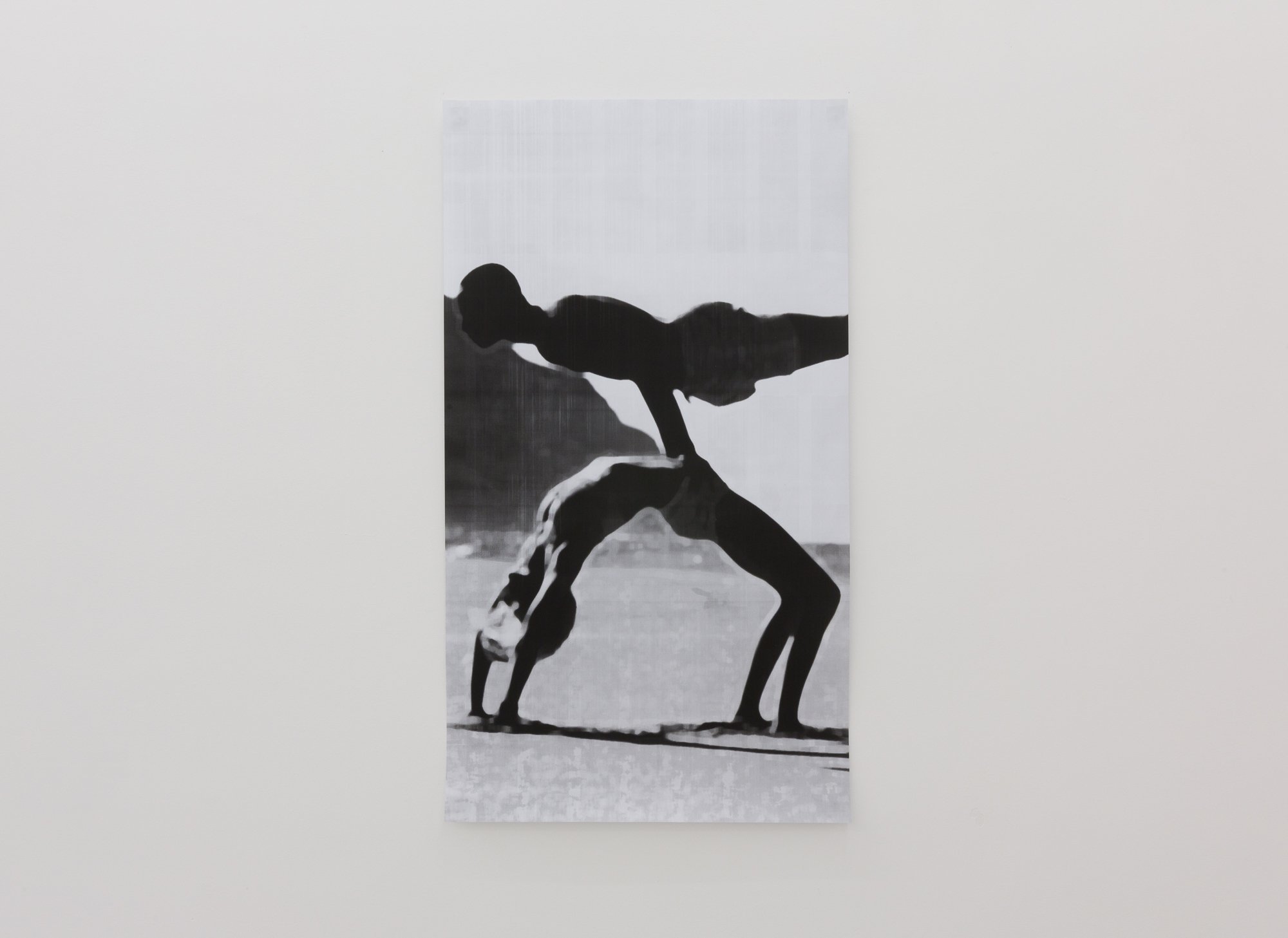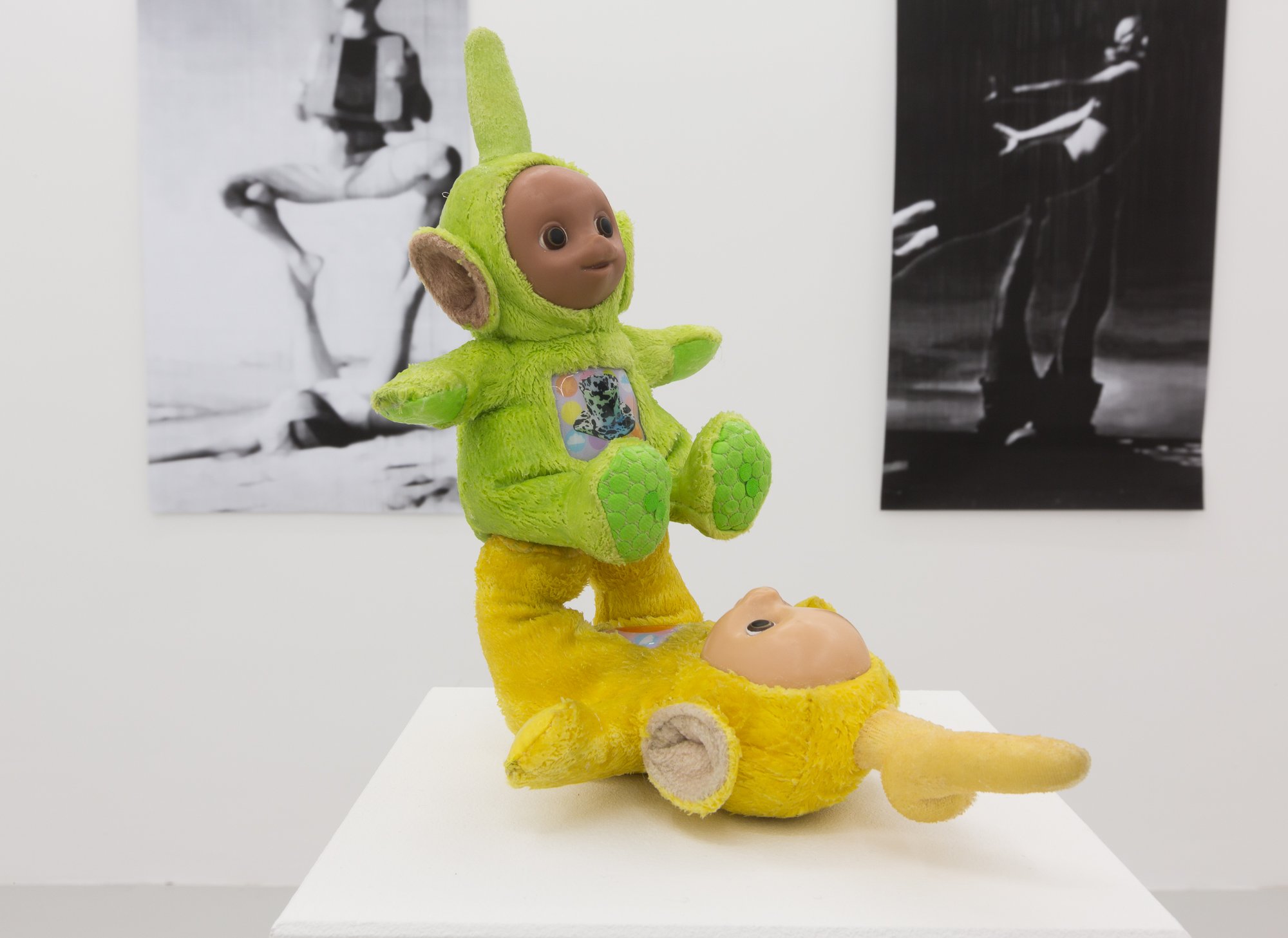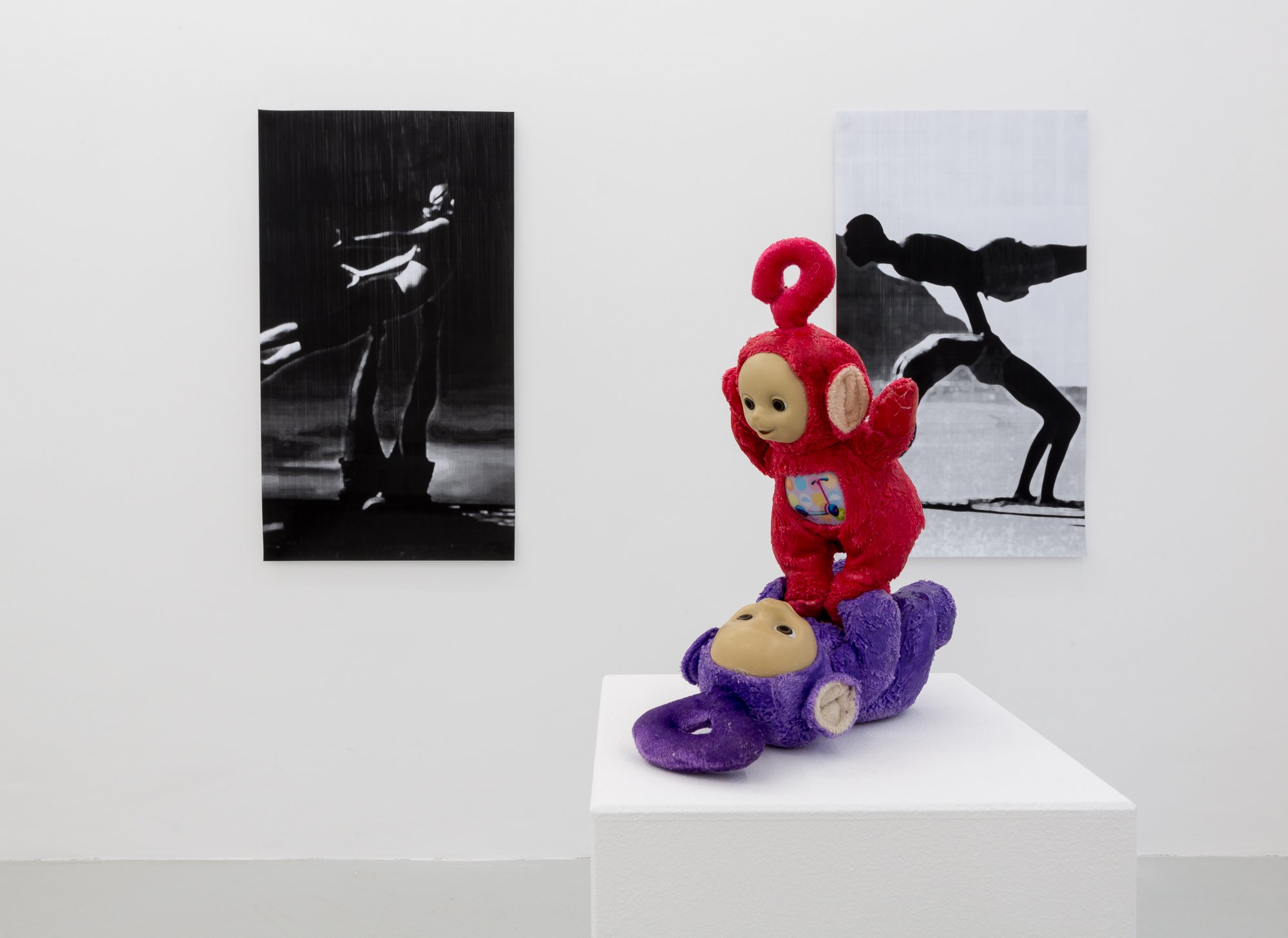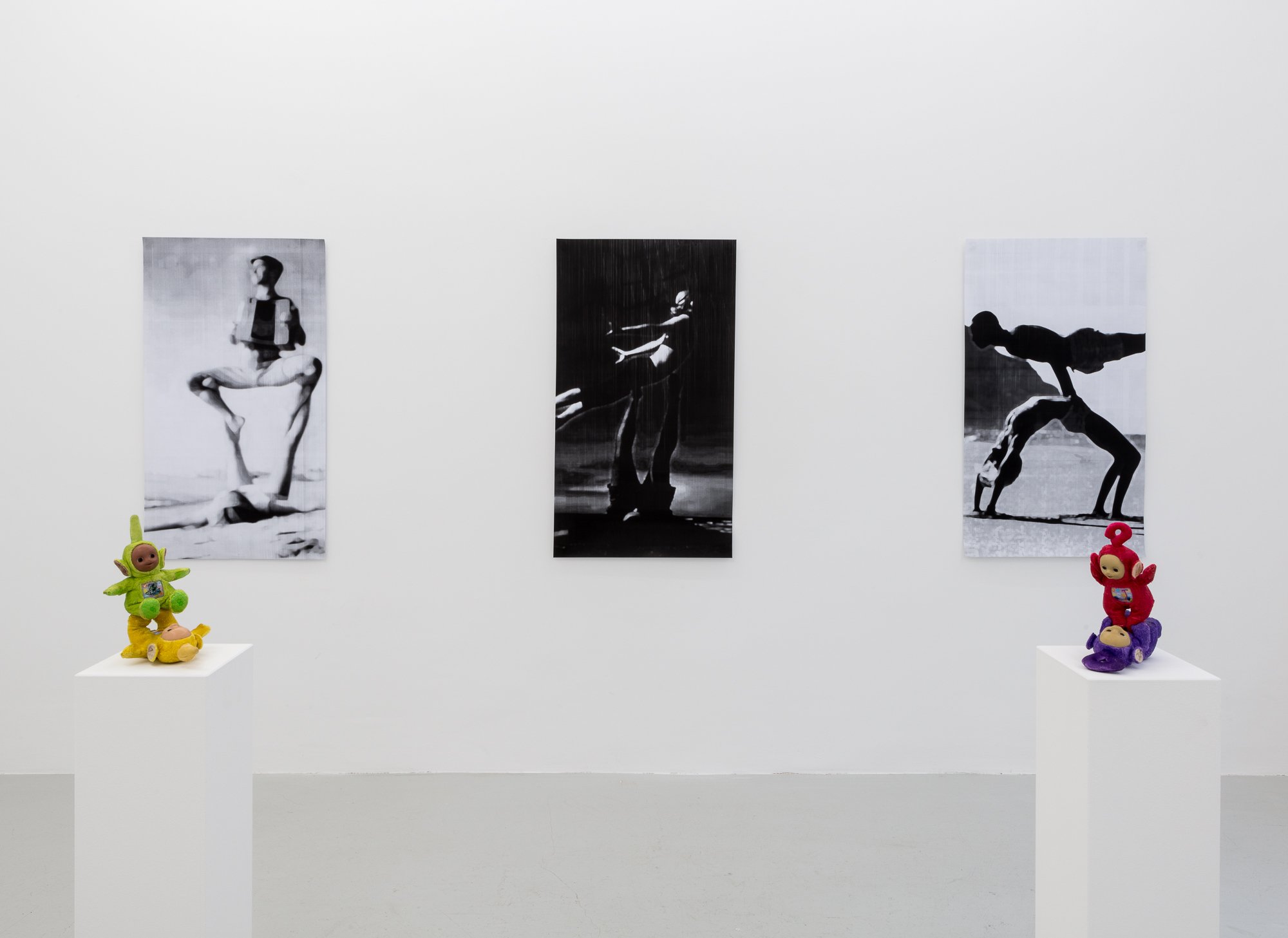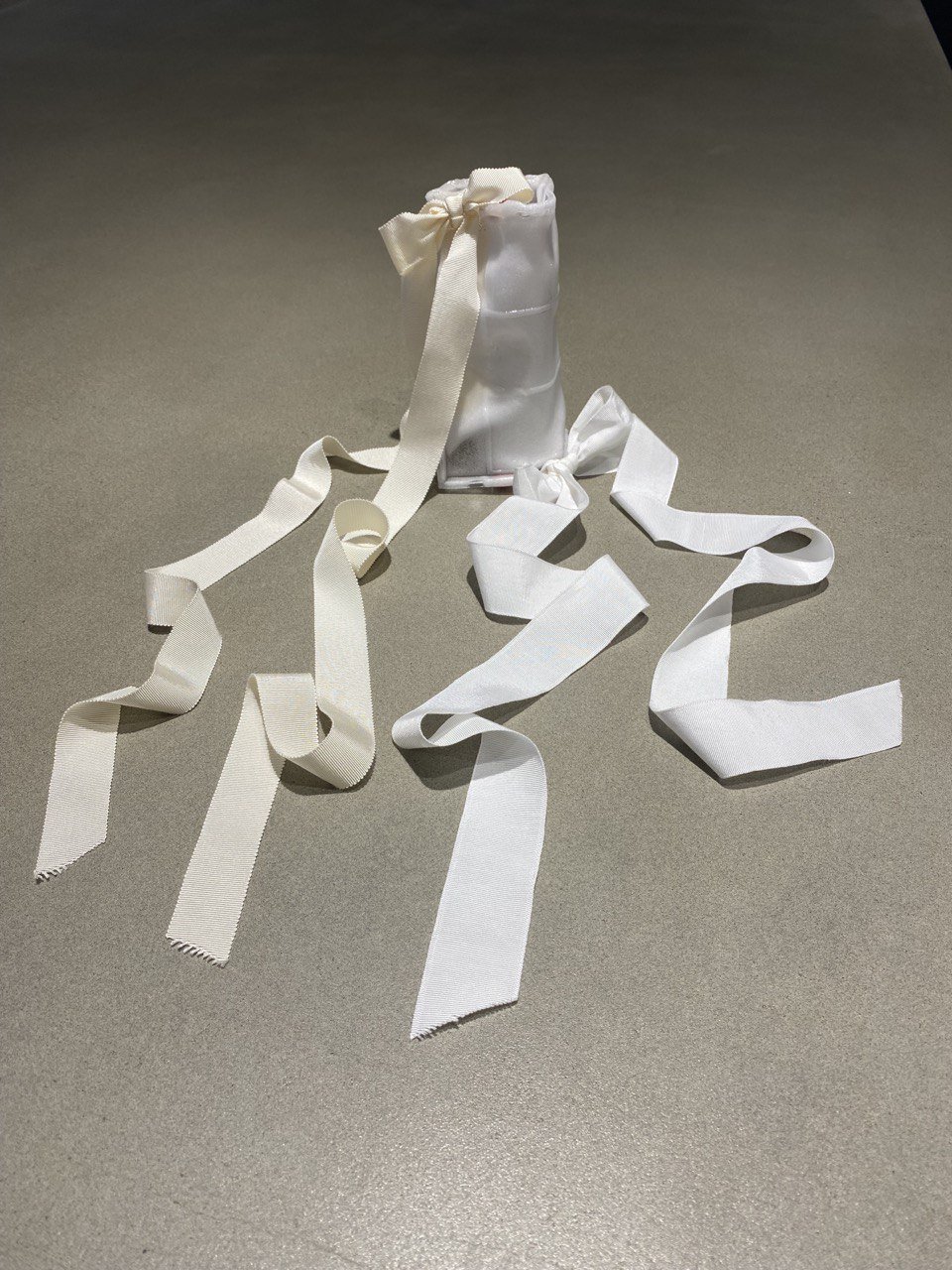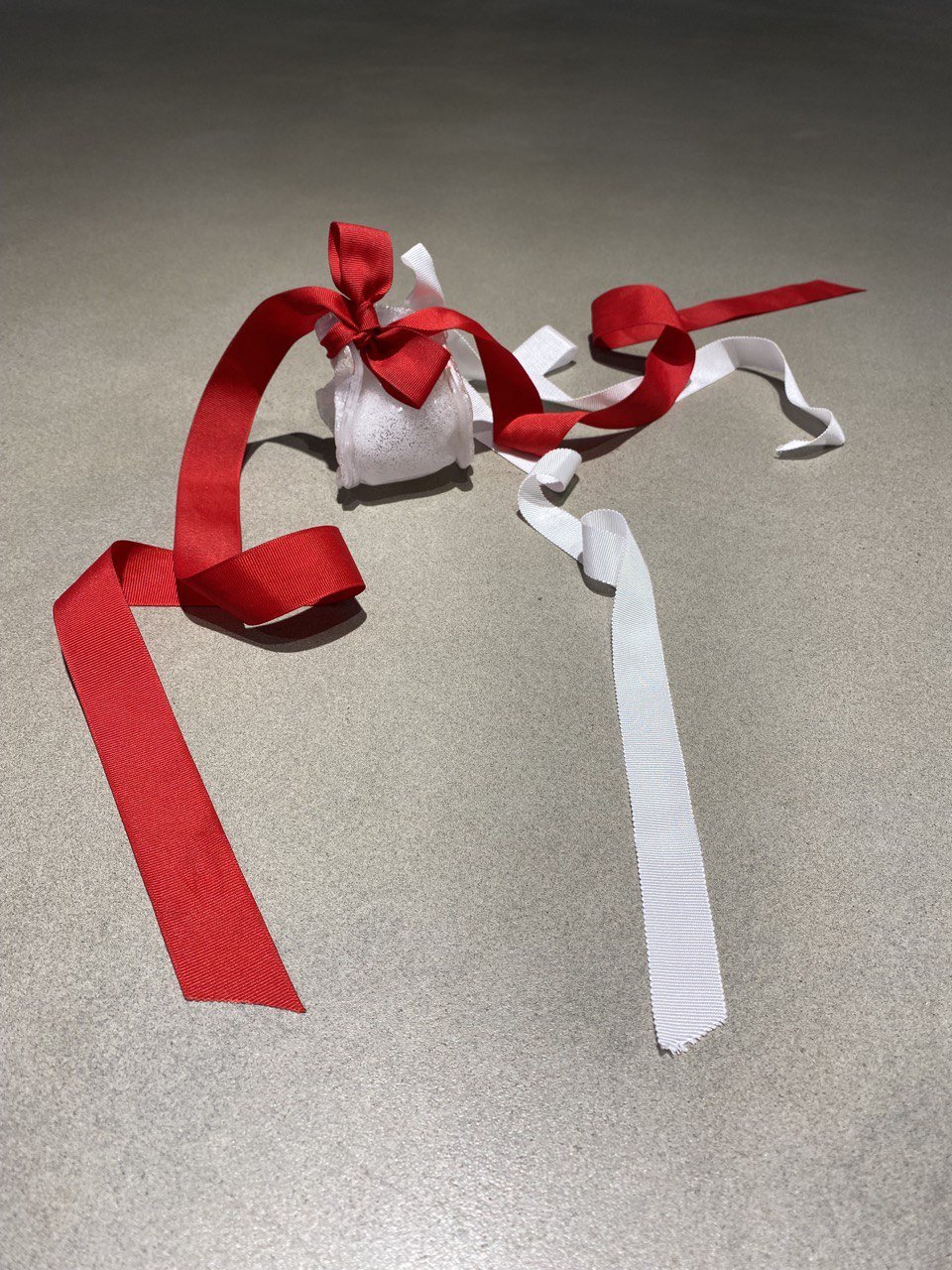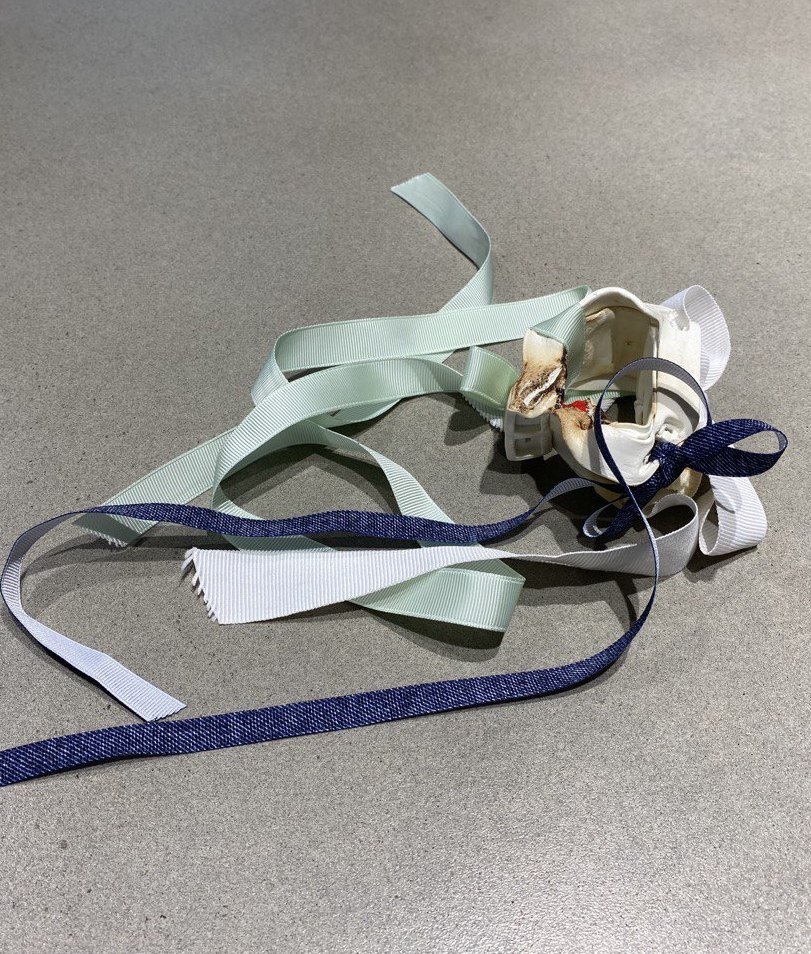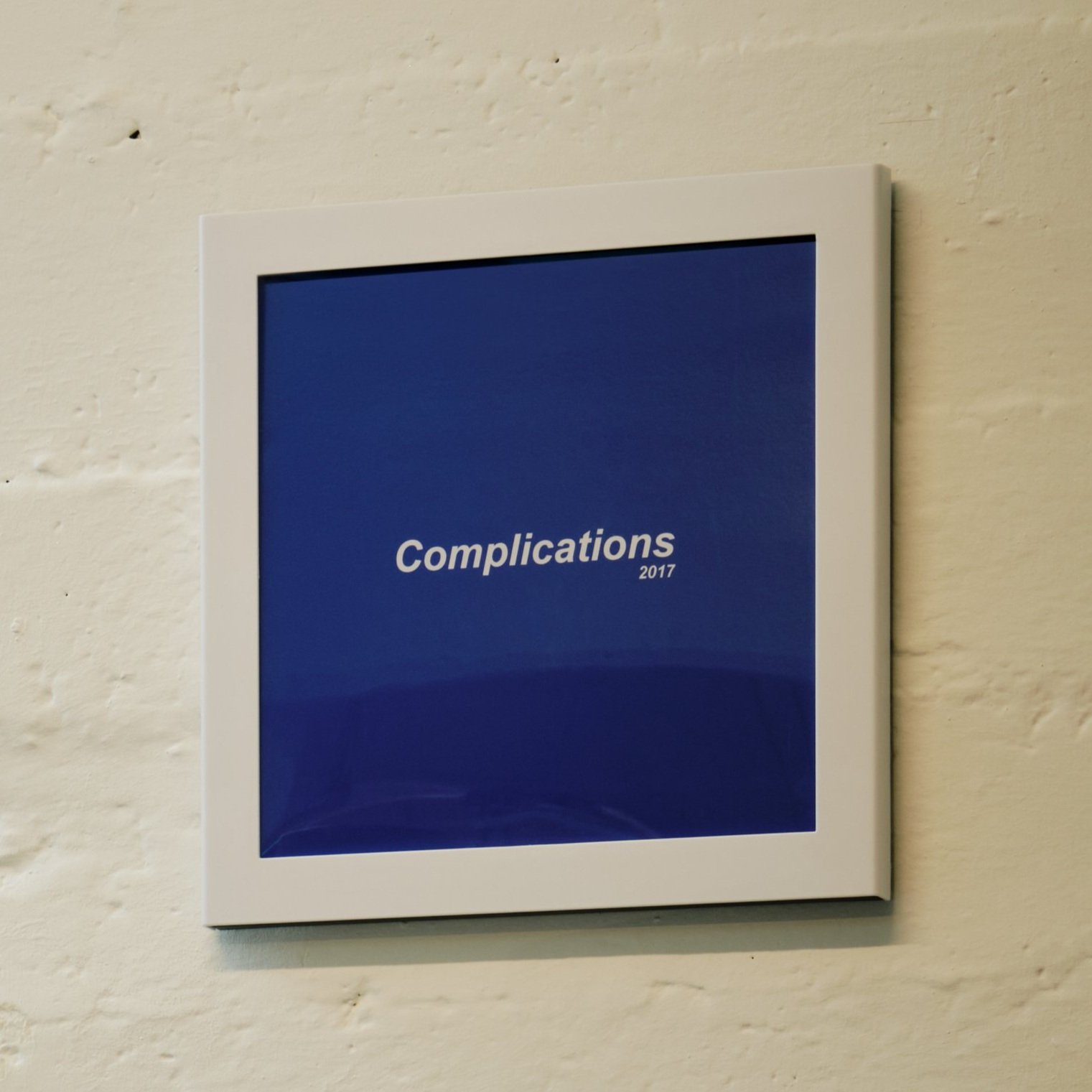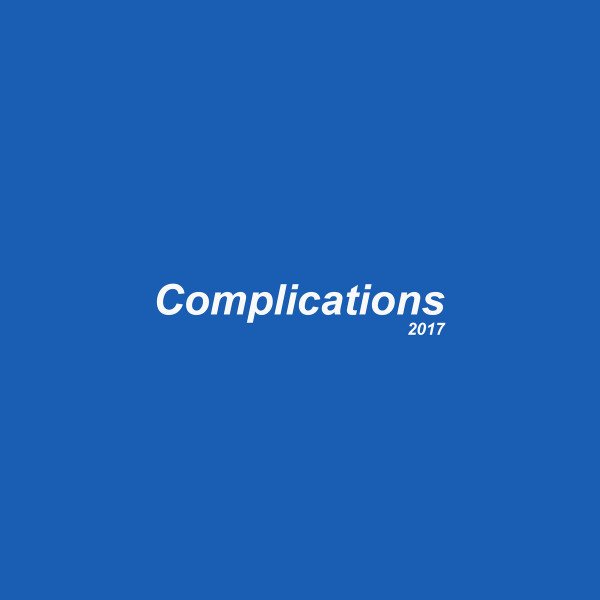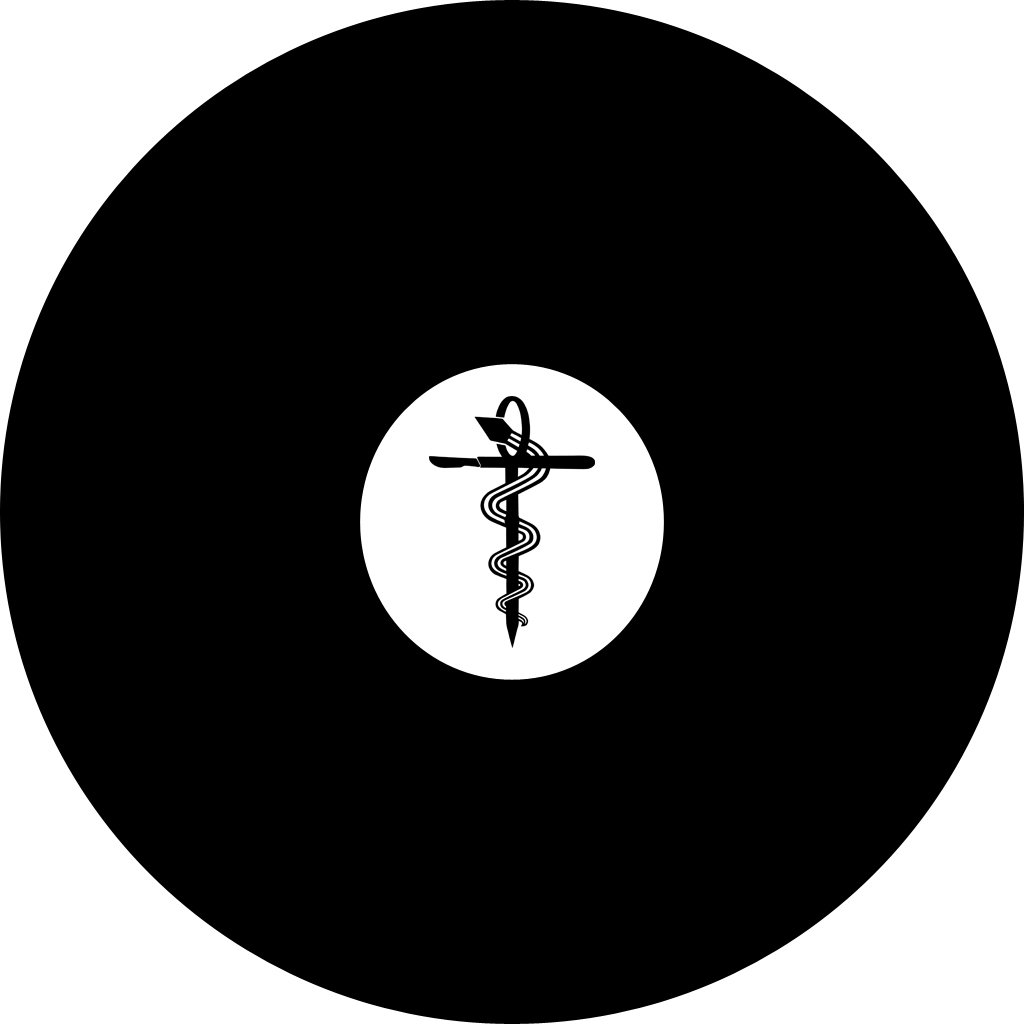Interview: Nina Cristante
Nina Cristante is an artist and musician who has recently started exploring the world of filmmaking. Shoreditch Arts Club is pleased to call Nina a collaborator, exhibiting four small sculptures and a record which explore themes and aesthetics familiar to heath, trauma, and healing.
icey u, h bomb, Fizzy, Niedling, all 2021 by Nina Cristante. Installation photographed by Beth Davis.
Nina Cristante’s practice investigates how states of health as well as physical and mental trauma, are embodied and transferred within contemporary, globalised lifestyles.
Her works on display at the club include four small sculptures, and a record. The sculptures were exhibited in the group exhibition Ann’s Research at Essex Street Gallery, New York, USA in 2022 and are made from a Playmobil hospital that has been distressed before being 'dressed’ with ribbons. The record, Complications, from her 2017 solo exhibition of the same title, features the NHS font, and audibly on the vinyl, ambulance sounds.
The following interview with Nina Cristante is by Shoreditch Arts Club’s Curator and long time collaborator Ché Zara Blomfield, and explores Nina’s diverse practice and how it correlates to the time we are living in.
CZB: As a starting point I’m curious to reflect back on the exhibition we worked on together in 2016. It had a lot to do with balance, especially exploring binaries. Black and white images of couples in acro-yoga poses were paired somewhat comically with the four soft toy Teletubbies sculpturally mimicking the postures.
At this time you were moving away from ‘fitness’ into ‘health’ as a theme, can you tell me about that transition?
NC: My perspective widened as I got further away from the moving body into a more integrated observation of the world of consumption as a whole. Health seemed at the time to include in itself all the topics I was looking at. It also offered a way out from the myopic research around my experience of the body within society. The exhibition we worked on together definitely witnesses that shift.
Can you tell me the titles of the works we are exhibiting at Shoreditch Arts Club and what they mean to you?
In general I feel like all of these sculptures continue my exploration on hospitals and medical spaces in connection to theatre and the film set.
They all remind me of anthropomorphic objects out of a cartoon. They are little grotesque creatures that have been adorned for a special occasion.
icey u is a play on ICU. h bomb is a play on the italian word bomboniera, which is a little gift given to the guests of a wedding with confetti usually wrapped in fabric with ribbons. Fizzy, suggests anxiety but also a glass of champagne erupting with bubbles. Neidling is a word I wrote half asleep waking up from a dream. The full sentence was medical neidling.
These titles are there as cues and sidetracking devices to lure the viewer in and out of the hospital.
The record, Complications, 2017 was made to accompany an exhibition. Would you call it a soundtrack? What’s the correlation between the two?
Yes I definitely consider it the soundtrack of the exhibition which has the same name. The exhibition revolves around a medical drama scene and each song from the album is built around a sample or a sound from a medical drama TV series! At the time I was looking into operating theatres and their relation to theatre itself. Medical dramas allowed me to play with this idea through their attention to costumes and setting and the choreography of the crossing narrative arches.
Nina Cristante, Icey u, 2022. Melted plastic, one ribbon, 11.75 × 11.43 × 6.99 cm
Can you tell the readers about the film you’ve been working on recently?
For the past three years I’ve been working on a medical mystery drama set in London, called The Richest Man in Babylon. The film will be around 20 minutes long and it’s in the editing state. I look forward to working on the soundtrack which will be guitar based, like a lot of the music that I have been part of recently with my own solo project and bar italia.
The plot follows the last weeks on earth of Elda, a European gyrotonic trainer in her forties. Training wealthy clients from out of town, she witnesses the crumbling down of the city and the welfare state, while fighting a mysterious disease the medical system is unable to diagnose.
Woven into the story are speculations on the connective tissue known as ‘Fascia’. ‘Fascia’ is the gluey fabric that holds our bodies together. I was reading The Body Keeps The Score (van de Kolk) when I came across the idea that the body stores trauma in its very tissues. These new studies described the body as a chaotic and interconnected web. Traumas stay trapped within it until disclosed through therapies that consider the mind body system as one.
It is at this point that anatomy and consciousness met for me. That’s when the idea of the film came about and where most of my thoughts are directed towards nowadays. I consider The Richest Man in Babylon a bit like the pilot episode of a medical TV series and would love to work on more episodes in the future.
Installation view of Nina Cristante’s solo exhibition Complications at YEARS Gallery, Copenhagen, DK.
Nina Cristante’s practice is embedded in the research on the politics of sickness, diagnosis, treatment and care. Borrowing from current scientific discourses on the connection between anatomy and consciousness, her work is choreographic and comical. Cristante engages directly with movies’ narratives, character development and costumes.
Since 2015 Nina Cristante has performed and exhibited work internationally in solo and group shows in artist-led organisations, project spaces, galleries and museums. These have included Bourse de Commerce, Paris [2021], Triest Gallery, New York [2020], Life Sport Project Space, Athens [2019 & 2016], South London Gallery [2018], Zacheta National Gallery, Warsaw [2017], Showroom MAMA, Rotterdam [2016], 9th Berlin Biennale, Berlin [2016], The Composing Rooms, Berlin [2016], Years Gallery, Copenhagen [2016], Et Al Gallery, San Francisco [2015], and MAXXI Museum, Rome [2015].
Nina Cristante’s artworks are on display at Shoreditch Arts Club until 21 October 2023.


